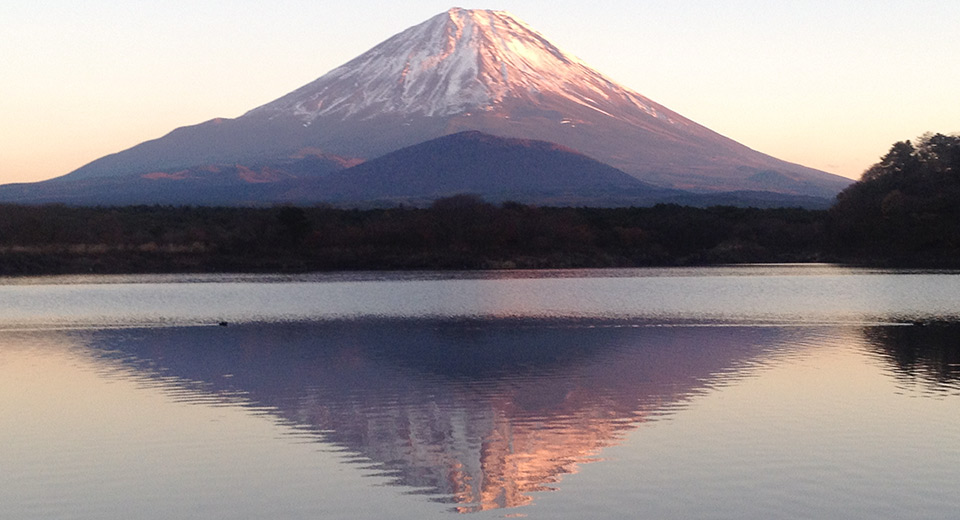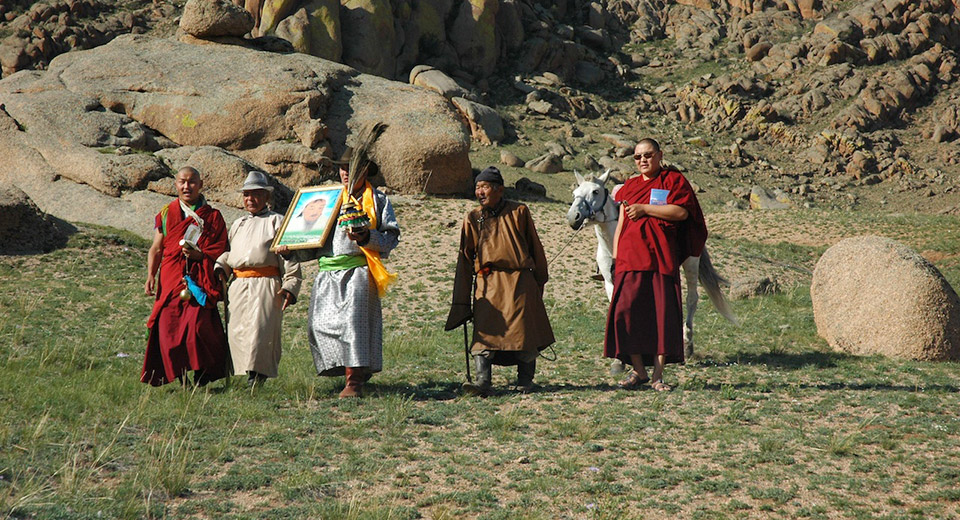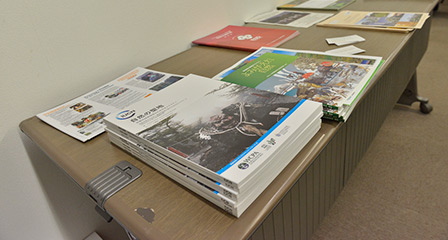ఆసియాలో, సేక్రేడ్ నేచురల్ సైట్స్ ఇనిషియేటివ్ దీనితో పనిచేస్తుంది జీవవైవిధ్య నెట్వర్క్ జపాన్ ఇంకా IUCN వరల్డ్ కమీషన్ ఆన్ ప్రొటెక్టెడ్ ఏరియాస్-జపాన్. పని యొక్క లక్ష్యం ఆసియాలోని పవిత్రమైన సహజ ప్రదేశాల గుర్తింపు మరియు పరిరక్షణను మెరుగుపరచడం. నుండి మంజూరు చేయడం వల్ల పని సాధ్యమవుతుంది కీడాన్రెన్ నేచర్ కన్జర్వేషన్ ఫండ్ దీనికి చొరవ కృతజ్ఞతలు . ఫండ్ మరియు దాని భాగస్వాములు దీని ద్వారా పనిచేస్తాయి మరియు ప్రచారం చేస్తాయి జీవవైవిధ్యం కోసం కీడాన్రెన్ డిక్లరేషన్.
ఆసియాలోని పవిత్ర సహజ ప్రదేశాలు
అనేక తరాలుగా స్వదేశీ ఆసియా పరిరక్షణ మరియు కమ్యూనిటీ-ఆధారిత రక్షిత ప్రాంతాలకు మద్దతునిస్తూ ఆసియా ప్రకృతి దృశ్యాలలో పవిత్రమైన సహజ ప్రదేశాలు ముఖ్య లక్షణాలు.. ప్రాజెక్ట్ యొక్క లక్ష్యాలు:- అవగాహనను పెంపొందించుకోండి, రక్షిత ప్రాంత నిర్వాహకులు మరియు పరిరక్షణ అభ్యాసకులచే పవిత్రమైన సహజ ప్రదేశాలకు మద్దతు ఇచ్చే గుర్తింపు మరియు సామర్థ్యం,
- రక్షిత ప్రాంత నిర్వాహకులు మరియు పరిరక్షణ అభ్యాసకులను కలిగి ఉన్న నిపుణులు మరియు అభ్యాసకుల అనధికారిక నెట్వర్క్ను సృష్టించండి,
- అభ్యాస సామగ్రిని అభివృద్ధి చేయండి మరియు ప్రచురించండి, IUCN UNESCO మార్గదర్శకాల అనువర్తనాన్ని పరీక్షించే ఆసియా నిర్దిష్ట కేస్ స్టడీస్ సిరీస్గా చేర్చబడ్డాయి, మరియు వీటిని మరియు నేర్చుకున్న పాఠాలను విస్తృత రక్షిత ప్రాంతాల సంఘంతో పంచుకోండి
IUCN UNESCO మార్గదర్శకాలు మరియు అంతకు మించి:
పవిత్రమైన సహజ సైట్ల మార్గదర్శకాలతో పని చేయడం ప్రాజెక్ట్ యొక్క ముఖ్య అంశం, వాటిని విమర్శనాత్మకంగా సమీక్షించడానికి, వాటిని రంగంలో వర్తింపజేయడానికి మరియు నేర్చుకున్న పాఠాలను పంచుకోవడానికి. ది IUCN UNESCO మార్గదర్శకాలు, లో ఇప్పటికే అందుబాటులో ఉంది కొరియన్ మరియు జపనీస్ రక్షిత ప్రాంతాలలో చేర్చబడిన పవిత్రమైన సహజ ప్రదేశాలను గుర్తించి మరియు మెరుగ్గా నిర్వహించడంలో సహాయపడటానికి రక్షిత ప్రాంత నిర్వాహకులకు సహాయం చేయడానికి ప్రత్యేకంగా అభివృద్ధి చేయబడ్డాయి, అలాగే విశాలమైన భూభాగం మరియు సముద్ర స్కేప్లో ఉన్నవి ముఖ్యంగా అభివృద్ధి ప్రాజెక్టుల ద్వారా ముప్పును ఎదుర్కొంటున్నాయి..ఆసియా ప్రాంతం నుండి వార్తలు
 ఆసియా పవిత్ర సహజ సైట్లు: ఒక ప్రచురణ రచనలు మరియు ఆన్లైన్ కేస్ స్టడీస్ కోసం కాల్
ఆసియా పవిత్ర సహజ సైట్లు: ఒక ప్రచురణ రచనలు మరియు ఆన్లైన్ కేస్ స్టడీస్ కోసం కాల్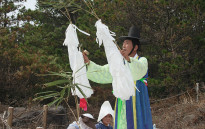 ఆసియన్ సేక్రెడ్ నేచురల్ సైట్స్ నెట్వర్క్ని పరిచయం చేస్తున్నాము
ఆసియన్ సేక్రెడ్ నేచురల్ సైట్స్ నెట్వర్క్ని పరిచయం చేస్తున్నాము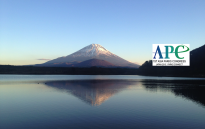 జపాన్ లో ఆసియా పార్క్స్ కాంగ్రెస్ వద్ద పవిత్ర సహజ సైట్లు ప్రొఫైల్ మరియు నెట్వర్క్ పెరిగిన
జపాన్ లో ఆసియా పార్క్స్ కాంగ్రెస్ వద్ద పవిత్ర సహజ సైట్లు ప్రొఫైల్ మరియు నెట్వర్క్ పెరిగిన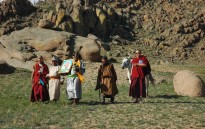 ఆసియా పార్క్స్ కాంగ్రెస్లో ఆసియా పవిత్ర సహజ సైట్లపై ప్రదర్శనల కోసం పిలుపునిచ్చారు.
ఆసియా పార్క్స్ కాంగ్రెస్లో ఆసియా పవిత్ర సహజ సైట్లపై ప్రదర్శనల కోసం పిలుపునిచ్చారు.
గుర్తింపును నిర్మించడం మరియు పరిరక్షణను మెరుగుపరచడం
ఆసియా పార్క్స్ కాంగ్రెస్ (జపాన్ నవంబర్ 2013) మరియు వరల్డ్ పార్క్స్ కాంగ్రెస్ (ఆస్ట్రేలియా, నవంబర్ 2014) ప్రదర్శనకు అనువైన వేదికలు, ప్రాజెక్ట్లో జరుగుతున్న పనిని భాగస్వామ్యం చేయడం మరియు ప్రచారం చేయడం. ఈ ప్రాజెక్ట్ మూడు సంవత్సరాలలో రూపొందించబడింది మరియు ఆసియా పవిత్రమైన సహజ ప్రదేశాలలో అనేక పరిరక్షణ ఉత్పత్తులు మరియు ప్రక్రియలుగా ఏకీకృతం చేయబడింది.:మొదటి దశలో ఆసియా పార్క్స్ కాంగ్రెస్లో మరియు ఆన్లైన్లో సేక్రేడ్ నేచురల్ సైట్స్ ఇనిషియేటివ్లో ప్రదర్శించబడే ఆసియా ప్రాంతం నుండి కేస్ స్టడీస్ ఉన్నాయి.. ఆసియన్ పార్క్స్ కాంగ్రెస్లోని వర్క్షాప్లు ప్రత్యేకంగా పవిత్రమైన సహజ ప్రదేశాలపై కాంగ్రెస్ ఫలితాలకు మద్దతునిస్తాయి.. పవిత్రమైన సహజ ప్రదేశాలలో ప్రాంతీయ ఆసియా నెట్వర్క్ అభివృద్ధికి ఆసక్తి స్కోప్ చేయబడింది.
రెండవ దశ ఆసియా ఆన్లైన్ కేస్ స్టడీస్ను అధ్యాయాలుగా విస్తరించడంపై దృష్టి పెడుతుంది, అది నేర్చుకున్న పాఠాలతో పాటు ఈ ప్రాంతంలోని విధానం మరియు ఆచరణలో ఉన్న సవాళ్లను అందించే పుస్తకంగా బండిల్ చేయబడుతుంది.. ఈ పుస్తకాన్ని వరల్డ్ పార్క్స్ కాంగ్రెస్లో ప్రదర్శించనున్నారు (WPC). WPC వద్ద ఆసియా పవిత్ర సహజ సైట్ల నెట్వర్క్ శిక్షణా మాడ్యూల్ అభివృద్ధికి మద్దతుగా వర్క్షాప్లలో సహకరిస్తుంది.. నెట్వర్క్ మొదటి ప్రాంతీయ వర్క్షాప్ మరియు హిమాలయ ప్రాంతానికి మద్దతు మిషన్కు కూడా మద్దతు ఇస్తుంది. అవసరమైన IUCN UNESCO మార్గదర్శకాలను ప్రాంతీయ భాషల్లోకి అనువదించడం మరియు పవిత్రమైన సహజ ప్రదేశాలలో దేశ ప్రొఫైల్ల అభివృద్ధికి మద్దతు ఇవ్వడం ప్రారంభించబడుతుంది..
మూడవ దశ చాలా వరకు అభివృద్ధిలో ఉంది మరియు ఇ-లెర్నింగ్ మాడ్యూల్ మరియు శిక్షణ లేదా వర్క్షాప్ మాడ్యూల్ను రూపొందించడానికి ఉద్దేశించబడింది. దేశంలో రక్షిత ప్రాంత నిర్వాహకులకు వర్క్షాప్లు మరియు శిక్షణలు నిర్వహించబడతాయి, పరిరక్షకులు మరియు సంరక్షకులు.
ఆసియా ప్రాంతంలో సైట్లు
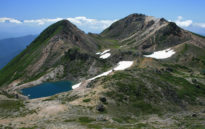 Mt వద్ద సస్టైనబుల్ టూరిజం ద్వారా పవిత్ర స్థలాలు పరిరక్షించటం. Hakusan, జపాన్.
Mt వద్ద సస్టైనబుల్ టూరిజం ద్వారా పవిత్ర స్థలాలు పరిరక్షించటం. Hakusan, జపాన్.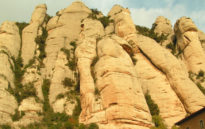 పరిరక్షణ మరియు స్థిరమైన జీవన కమ్యూనిటీలు: యూరోప్ మరియు మధ్య ప్రాచ్యం లో క్రిస్టియన్ మఠాలు
పరిరక్షణ మరియు స్థిరమైన జీవన కమ్యూనిటీలు: యూరోప్ మరియు మధ్య ప్రాచ్యం లో క్రిస్టియన్ మఠాలు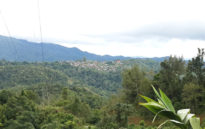 చంగ్ మై లుయా ప్రజలు పవిత్ర పర్వతాలలో విరుద్ధమైన విలువ వ్యవస్థలు, థాయిలాండ్.
చంగ్ మై లుయా ప్రజలు పవిత్ర పర్వతాలలో విరుద్ధమైన విలువ వ్యవస్థలు, థాయిలాండ్.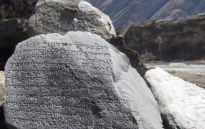 తప్పక పవిత్ర లోయ: అహింస బౌద్ధ పోకడలను పరిసర ప్రజల స్ఫూర్తి, నేపాల్లో
తప్పక పవిత్ర లోయ: అహింస బౌద్ధ పోకడలను పరిసర ప్రజల స్ఫూర్తి, నేపాల్లో Kakku మరియు పరిరక్షణ వ్యూహాలు gawbaka పాలన: ద్రవం స్టాటిక్ ఆధ్యాత్మికత వర్సెస్, మయన్మార్.
Kakku మరియు పరిరక్షణ వ్యూహాలు gawbaka పాలన: ద్రవం స్టాటిక్ ఆధ్యాత్మికత వర్సెస్, మయన్మార్.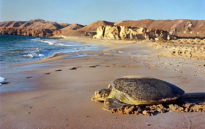 రాస్ అల్ హాడ్ నేచర్ రిజర్వ్ వద్ద సముద్ర తాబేలుకు ఒక పురాతన స్మారక చిహ్నం, ఒమన్
రాస్ అల్ హాడ్ నేచర్ రిజర్వ్ వద్ద సముద్ర తాబేలుకు ఒక పురాతన స్మారక చిహ్నం, ఒమన్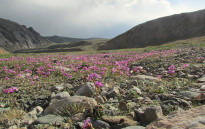 ప్రపంచంలోని ‘థర్డ్ ఐ’ వద్ద సహకారం కోసం అవకాశం, సరస్సు ఇస్సిక్ కుల్
ప్రపంచంలోని ‘థర్డ్ ఐ’ వద్ద సహకారం కోసం అవకాశం, సరస్సు ఇస్సిక్ కుల్ కంబోడియాలో ఆనిమిస్టిక్ పర్యావరణ పర్యాటకంతో ప్రకృతి మరియు సంస్కృతిని పరిరక్షించడం.
కంబోడియాలో ఆనిమిస్టిక్ పర్యావరణ పర్యాటకంతో ప్రకృతి మరియు సంస్కృతిని పరిరక్షించడం.

